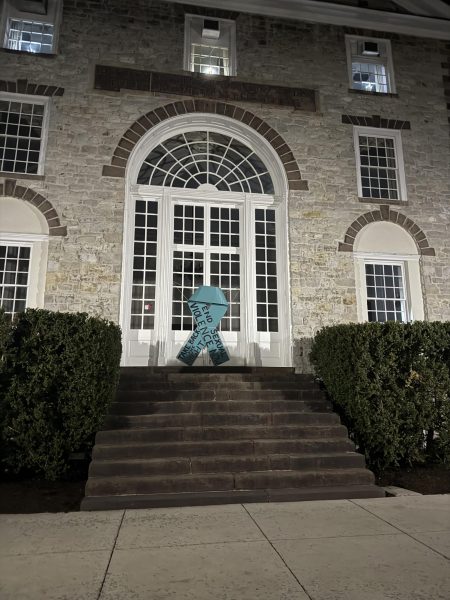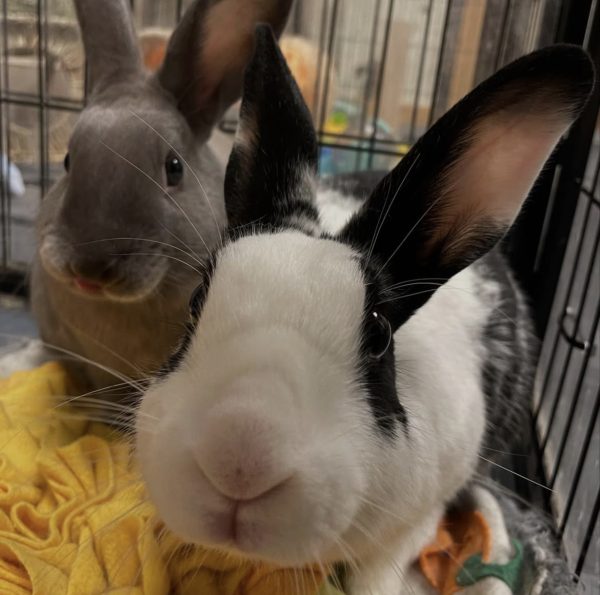Diversity Training Criticized for Generalizations
Students in attendance at a training event prior to the beginning of the academic year had strong and critical reactions to the speaker’s presentation on intercultural communication.
Janet Bennett was invited by the Intercultural Competency Task Force, which is co-chaired by Samantha Brandauer, associate Provost and executive director of the Center for Global Study and Engagement and Brenda Bretz, senior associate provost of Academic Affairs. According to Bretz, President Margee Ensign has launched this initiative with the intention of increasing cultural competency and preparing students for abroad experiences, among other goals.
Bennett’s talk, entitled “Values, Cultures and Conflicts: Intercultural Complications” was given on August 17 from 6:30 to 9:30 p.m. It was mandatory for First-Year Mentors (FYM) and Residential Advisers (RA).
The majority of the student complaints on the presentation referred to “generalizations” and “poor word choices” made by Bennett.
Winnie Le ’19, a FYM, said, “In my opinion, she could not tell the difference between individualism and individuality (which is pretty bad for someone working in her field, obviously). For instance, she said that Asian parents would not allow children to have any individualities because our society has a collective basis and not an individualistic one. This statement is so cringe-worthy to me.”
She added, “Everything she said was similar to things mentioned in an Intercultural Communication book published 40-50 years ago, rather than something you can find today.”
“It became apparent pretty quickly that the speaker was qualified in her field, but her terminology and sensitivity seemed outdated,” Michael Dunn-Weiss ’18, FYM, stated. “She would call on people of different groups and ask them questions to reinforce her point, like she would make a hand gesture, and ask something like, “Are you Japanese? What does this mean in Japanese culture?” And the poor kid would have to answer, hyperaware of the fact that he was the only Japanese kid in the room.”
Le also added, “She assumed that every “white” person sitting in the room that day was European-American (which was so not true and was so infuriating).”
Isoke Senghor ’20, who is a FYM, stated she did not think that some of the speaker’s words reflected Dickinson’s community values.
According to Senghor, there was a point when Bennett said, “ ‘Oh, where are my Asians?’” Senghor added that that language was “very insensitive…that’s not a part of our community values to call someone out, to use insensitive vocabulary, [to] take the personhood from that person…
I think that made it not productive because now at the beginning of this three-hour talk, now we have a lot of people who now have a wall up because they don’t feel comfortable and they may not have felt safe.”
Bertz commented on the criticisms of generalizations that were made about the presentation.
“These are very fair critiques,” she said. “[The feedback] makes me incredibly proud of Dickinson students…Students are listening to what they are learning in class and applying [it] to life.”
Many students shared that they appreciated the effort and thought behind the presentation, but were disappointed with the execution.
“I think it was a great idea in theory,” offered Dunn-Weiss. “Bring in someone who has devoted her life to studying cultural differences and norms, and have her give a detailed presentation on how to bridge cultural gaps and form personal relationships despite our different backgrounds. But it was tough to see someone so qualified be so poorly received by so many people.”
Colby Lutz ’19, who is an RA, said, “There were some useful points hidden behind a presentation that was not geared towards her audience. Her word choice was poor for those who were listening and it seemed more to be directed at a board room of middle-aged (mostly white) management people in the business world than college students.”
However, according to Bertz, Bennett uses a model that is “used by a lot of organizations and businesses for employee education.” She even called this model of intercultural communication training the “gold standard.”
RA Madi Jaronski ’18 stated that she was initially “startled and puzzled,” however, after a “proper debrief,” she was able to “understand the presentation for what it was and for what it was intended to be.”
Overwhelmingly, attendees agreed that conversations about diversity and intercultural competency were essential to their roles as campus leaders.
Jaronski continued, “I believe that President Ensign’s campus-wide initiative to enhance our collective knowledge about intercultural competence is extremely beneficial to the role of a Residential Advisor.”
Senghor said, “It was a great idea! I think it is important to have training, in terms of how to effectively communicate.” But then she criticized, “However, there’s no blueprint on how to communicate with someone from this region because they are from this region. Everyone has their own way of communicating.”
According to Bretz, over 100 evaluations were submitted in reaction to the presentation. “People on this campus are enthusiastic about this – that to me is the most important thing,” she said. “We need to keep moving forward and develop the right approach.”
Ken Bamba ’20, FYM, added that while he has “respect for the speaker and her intentions, she was speaking to students that had grown up in a generation much different than her own.” He concluded, “No matter what, one should shy away from educating anyone about a culture that is not their own.”
Bennett conducted three other presentations while at Dickinson, the feedback for which Bretz described as “incredibly positive.”
Bennett could not be reached for comment in this article.






Sandra Tremore • Sep 20, 2017 at 6:23 pm
The speaker is known for repeating the same material she ran with 40 years ago. Does not serve anyone of today’s interest.